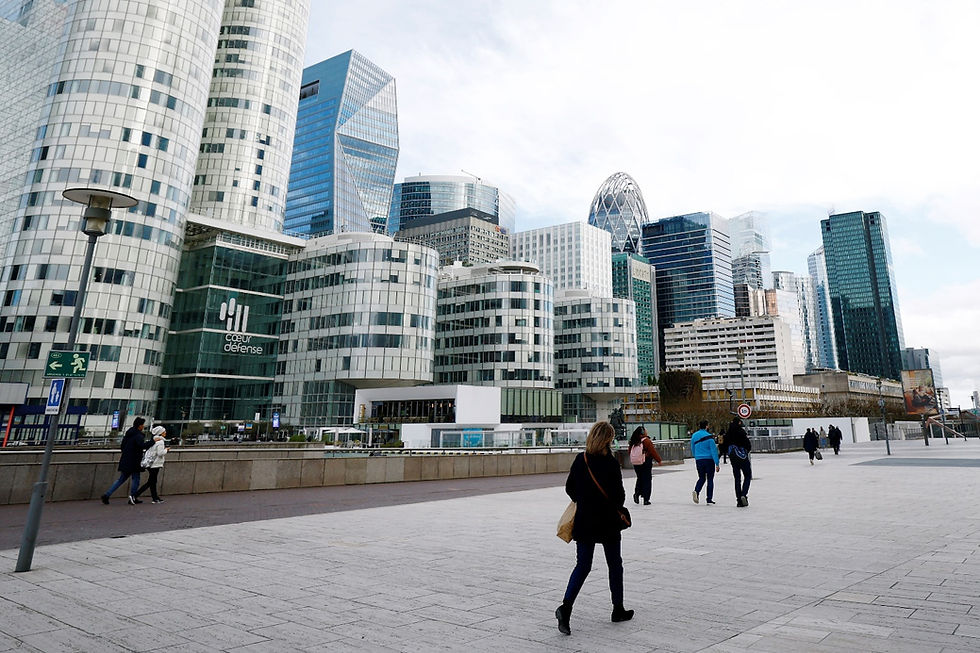India's Economic Outlook: Challenges in the Face of Global and Domestic Pressures
- Bishat Pankaj

- Dec 18, 2024
- 3 min read
Pankaj Singh Bisht, Jadetimes Staff
Pankaj is a Jadetimes news reporter covering Business News.

India, the world's fifth-largest economy, has always been a growth and potential beacon among emerging markets. However, the current economic scenario tells a mixed story. Signs of strain have started to appear, which include a decline in consumer spending and severe challenges for businesses across sectors. These domestic challenges are compounded by global economic pressures, making it a multifaceted challenge for policymakers and businesses alike.
Declining Consumer Spending: A Key Concern
A worrisome decline is being observed in consumer expenditure, an important engine for the Indian economy over the last few quarters. Rising prices have depleted the household purse, prompting consumers to choose only essentials ahead of discretionary spendings. High interest rates meant to arrest inflation further sapped consumer demand for major consumption items including automobiles and real estate. Retail sales indicate that value pricing has taken the better of discretion in purchasing as the uncertain economic milieu weighs upon consumer psyche as well.
The rural economy, which is a sizeable part of India's consumer base, has also been under stress. Erratic monsoons and uneven agricultural output have impacted rural incomes, reducing their contribution to overall consumption growth. As rural spending slows, its ripple effects are being felt across industries, from fast-moving consumer goods (FMCG) to durable goods.
Business Challenges Amid Uncertainty
India's business environment is facing headwinds on multiple fronts. It is here that it most hurts the small and medium enterprises (SME), who are the backbone of the economy. Rising cost inputs and constrained access to credits pose significant challenges for operation sustenance in most small and medium enterprises. Moreover, supply chain disruptions due to COVID-19 are still persistent, affecting manufacturing and exporter industries.
Not immune to this are large corporations. Export-driven industries in textiles and IT services are witnessing slowing demand coming from key markets such as the US and Europe. The depreciating Indian rupee, though it's a boon for exporters in some ways, has resulted in higher costs of raw material imports, further squeezing the margin of profit.
Global Economic Pressures: An Added Burden
Globally, India is not immune to the economic headwinds. Growth slowdown in developed economies, tension in geopolitics, and distortion in energy markets make a challenging environment for trade and investment. The Russia-Ukraine conflict has increased the prices of crude oil and brought the import bill for India to higher levels with increased widening of the trade deficit, bringing pressure on the foreign exchange reserves and Indian rupee.
Foreign direct investment (FDI) inflows, a key source of capital for infrastructure and innovation, have moderated. Investor wait-and-watch approach will continue due to global uncertainty, affecting long-term growth prospects.
Domestic Policy Changes and the Way Forward
Domestically, policy interventions have had mixed success in tackling these challenges. While government schemes such as PLI aim to boost manufacturing and exports, the benefits are yet to be fully realized. On the other hand, schemes to improve rural infrastructure and provide subsidies have provided temporary relief but not addressed structural issues in the rural economy.
To regain economic momentum, India needs a multi-dimensional approach. Reviving consumer confidence through targeted fiscal initiatives such as tax cuts and direct benefit transfers can galvanize demand. At the same time, incentives for private investment by improving the ease of doing business and stable policy frameworks will attract domestic and foreign investors.
The RBI also has a critical role to play. A balanced approach to monetary policy, where inflation is addressed without choking growth, is necessary to create an environment that would facilitate recovery. Accelerating digitalization and fostering innovation can help Indian businesses remain competitive in the rapidly evolving global market.
Conclusion
India's economic challenges are huge, but not insurmountable. The country's resilience, with a young workforce, a dynamic private sector, and strategic reforms, can well support a robust recovery. By dealing with immediate concerns while laying the groundwork for sustainable growth, India can navigate its current economic crossroads and emerge stronger in the years to come.










































Comments